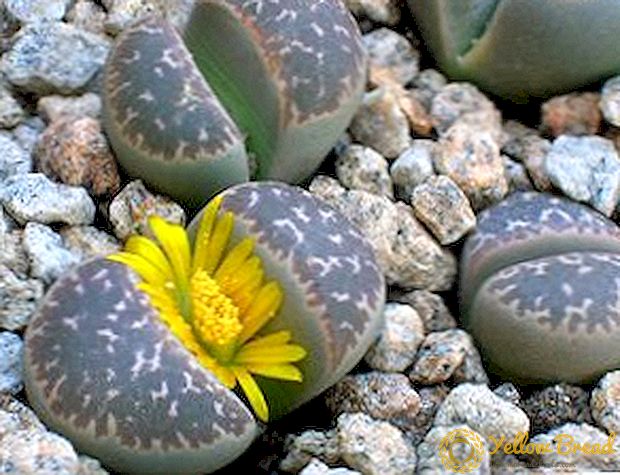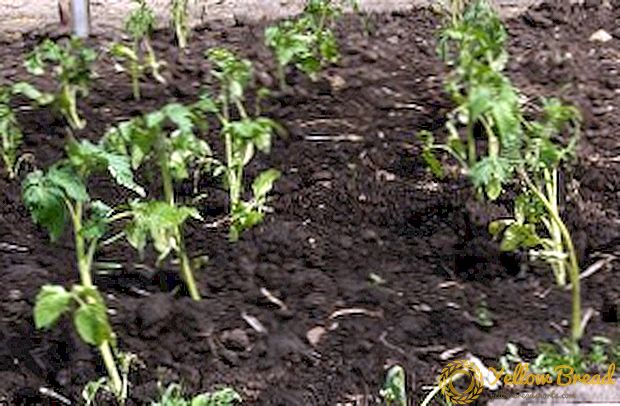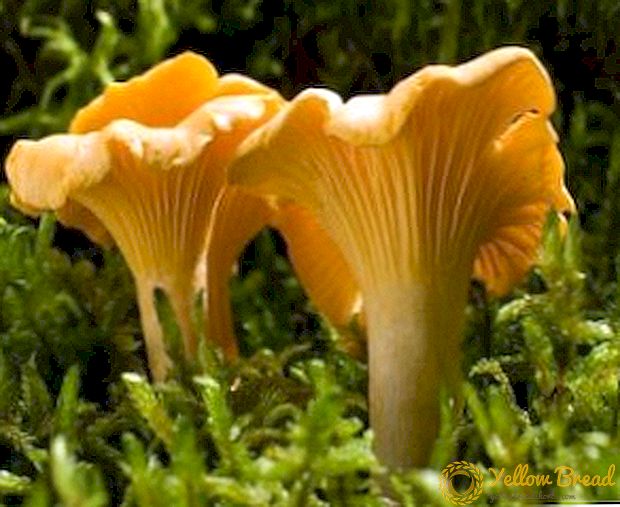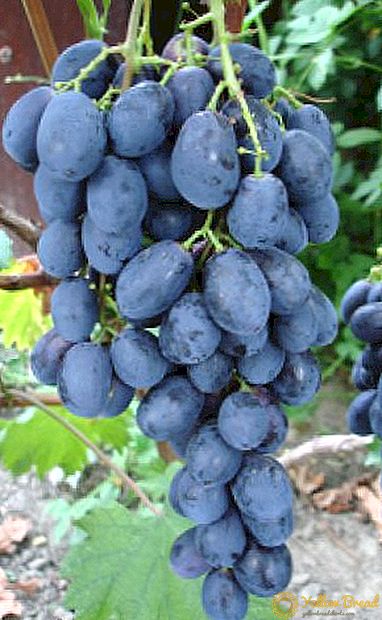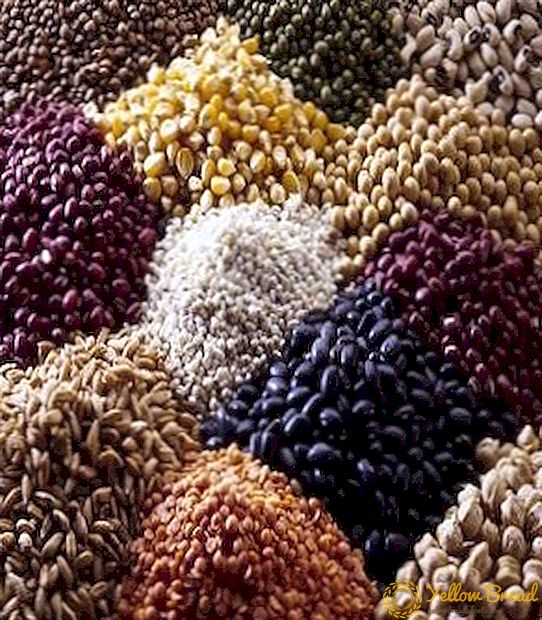 Grains are the plants of the monocotyledonous category, which are included in the Meatlikov family. This includes rye, oats, barley, buckwheat, etc. The purpose of growing such plant crops is grain. This is the main product used to make pasta, bread and various pastries. Also, grain is used as food for animals and birds. Used for such purposes, it is in pure form or in the form of mixtures.
Grains are the plants of the monocotyledonous category, which are included in the Meatlikov family. This includes rye, oats, barley, buckwheat, etc. The purpose of growing such plant crops is grain. This is the main product used to make pasta, bread and various pastries. Also, grain is used as food for animals and birds. Used for such purposes, it is in pure form or in the form of mixtures.
- Wheat
- Barley
- Oats
- Rye
- Millet
- Corn
- Spelled
- Buckwheat
- Quinoa
Grain is used in the production of starch, alcohols, medicines, etc. Even by-products are used for their purpose, because they can also use chaff and straw as food or bedding for livestock. In this article we will tell you in detail about the most widely known cereals, providing a list of these plants with names and photos.
Wheat
Wheat can confidently be called the most important and significant grain crop. This plant is one of the first places in the field of food production. It is valuable in that its protein composition can form gluten, which is very important for the preparation of bakery products, pasta, semolina, etc.High-quality bread is baked from wheat flour, which has good taste properties and is also well absorbed by the body.

Bread, which was made from wheat, differs from other types of sticky crumb and low porosity. Aftertaste it leaves grassy and slightly malt.
Wheat belongs to a number of annual plants. It is represented by many species. But the most common are hard and soft varieties. Solids are usually grown in areas where the climate is relatively dry. Thus, in Australia and in the countries of Western Europe they are engaged in the cultivation of predominantly soft wheat varieties, but in Argentina, the USA, in Western Asia, and also in our country, solid varieties prevail. This culture is used in the field of food. Flour, which is obtained from the grain, is sent to the manufacture of bread and other pastries.Waste after grinding the flour is sent to feed poultry and animals. 
Both varieties of wheat culture have many similar characteristics, but also differ in many respects. According to historians, the ancient Romans and Greeks were able to distinguish these varieties of wheat. In flour, which is extracted from soft varieties, starch grains are larger and softer, and the consistency is noticeably thinner and crumbly. There is some gluten in such flour and it is able to absorb little liquid. It is best to use it for the preparation of pastry pastry, and not bread.  In flour from durum starch grains are smaller and harder. The consistency of fine-grained nature, and the amount of gluten is much higher. This flour can absorb a lot of liquid and is usually used for baking bread.
In flour from durum starch grains are smaller and harder. The consistency of fine-grained nature, and the amount of gluten is much higher. This flour can absorb a lot of liquid and is usually used for baking bread.
Barley
Barley is called one of the most ancient plant crops. There is information that more than 4 thousand years ago they were engaged in the cultivation of this grain crop in China. As for Egypt, the remains of this grain plant were found in the burials of the pharaohs.It was from there that the plant got into the territory of the Roman Empire, as well as of Ancient Greece. According to merit, beer made from barley is called the oldest drink of humanity. Grain was also used to make porridge and bake bread. A little later, it began to be used as feed for their pets and birds.  This is an annual herb. The height of the stem can reach about 135 cm. Barley can be grown on virtually any soil, since it is not capricious and demanding to the growing conditions. In connection with its properties, the plant has found its distribution both in the north and in the south. To date, several hundreds of different barley varieties were bred, each of which was adapted to different terrain conditions.
This is an annual herb. The height of the stem can reach about 135 cm. Barley can be grown on virtually any soil, since it is not capricious and demanding to the growing conditions. In connection with its properties, the plant has found its distribution both in the north and in the south. To date, several hundreds of different barley varieties were bred, each of which was adapted to different terrain conditions.
It is recommended to sow barley early, when the soil is still saturated with sufficient moisture. This is due to the fact that the root system of barley is superficial. The plant is spring and winter. Spring barley crops are more resistant to frost and early ripening. As for winter crops, it is a subspecies that endures drought and high temperatures more tenaciously.  Barley is used for the manufacture of pearl barley, barley groats, as well as barley drink, reminiscent of its taste coffee. Also, this plant is used in the field of alternative medicine, as it is believed that it has cleansing, soothing and firming properties.
Barley is used for the manufacture of pearl barley, barley groats, as well as barley drink, reminiscent of its taste coffee. Also, this plant is used in the field of alternative medicine, as it is believed that it has cleansing, soothing and firming properties.
Barley porridge is perfect for people who are overweight, because such a product, passing through the intestines, takes and removes from the body excess cholesterol and harmful elements. A decoction of barley can help in the treatment of dry cough, they can also treat intestinal diseases and cystitis.

Oats
Cultivated grain plant called oats began to grow in about 2500 BC. erToday it is very difficult to determine where exactly the sources of its cultivation come from, but the opinions of archaeologists agree that it was somewhere in Eastern Europe.
Today, approximately 95% of oats are grown as animal feed, and only the remaining 5% is used for consumption by the population. There is quite a bit of gluten in oats, so it’s not practical to make ordinary bread out of it. But then it can be safely added to various confectionery products, in particular, to be used for baking the famous oatmeal cookies.
Oats are an excellent fodder crop. It contains a lot of protein and starch, as well as vegetable fat and ash. It is indispensable for feeding horses and young cattle. Grain contains a large amount of vitamins of group B, as well as manganese, cobalt and zinc.
This plant is not demanding to the ground. It will grow well on clay and loamy soils, as well as on sandy and peaty soils. It will be bad to grow only on excessively saline soil. This plant culture is self-pollinated. The growing season lasts from 95 to 120 days.  This cultural unit has a high rate of productivity.For example, in Ukraine on high-quality plots you can collect about 65-80 centners of grain per hectare. The most valuable is grain, which has a white color. Black, gray and red grains have a slightly lower value. The largest countries producing oats for the current time are Germany, Ukraine, Poland, Russia, Northern Kazakhstan, as well as the USA.
This cultural unit has a high rate of productivity.For example, in Ukraine on high-quality plots you can collect about 65-80 centners of grain per hectare. The most valuable is grain, which has a white color. Black, gray and red grains have a slightly lower value. The largest countries producing oats for the current time are Germany, Ukraine, Poland, Russia, Northern Kazakhstan, as well as the USA.
Rye
Rye is the most plastic cereal crop in the areas of its distribution. It is able to perfectly adapt to the regions of complex natural climate. Only this cereal plant can withstand a drop in temperature to -23 ° C. The advantage of rye can also be considered its resistance to acidic soils. It has a highly developed root system, which absorbs water well, as well as nutrients from the soil deep layers. Its resistance to stress helps to produce a stable and rich harvest, even in those years when weather conditions are characterized by unfavorable manifestations.
This grass has a fibrous and very powerful root system that goes down to the ground to a depth of 2 m.On average, the stem of rye grows to 80-100 cm in height, it depends on both the plant variety and the conditions in which it grows. Sometimes rye can grow up to 2 m in height. The stalk itself is almost bare, only under the ear has a low hairiness. The foliage of this plant is flat, about 2.5 cm wide and about 30 cm long. The surface of the leaves is often pubescent, which indicates a high level of drought resistance of the plant.  Rye grains come in different sizes, colors and shapes. They can be either oval or slightly elongated. The length of one grain usually varies from 5 to 10 mm. Color options may be yellow, white, brownish, gray or slightly greenish.
Rye grains come in different sizes, colors and shapes. They can be either oval or slightly elongated. The length of one grain usually varies from 5 to 10 mm. Color options may be yellow, white, brownish, gray or slightly greenish.
This cereal crop rises quickly enough, after which it rapidly begins to build up green mass. Dense and powerful stems are formed already for 18-20 days after the emergence of rye, and already for 45-50 days the plant begins to spike. Pollen from this culture is easily carried by the wind. Full maturity of the plant occurs approximately two months after it has been planted.
Rye - This is one of the most useful cereal crops.It is an excellent dietary product, incorporates a large amount of minerals and vitamins, which are indispensable for humans. Here there are vitamins of groups B and A, folic acid, potassium, sodium, phosphorus, magnesium, lysine and many other useful elements.
Rye products, preparations and decoctions help in the fight against a number of diseases. These include cancer, arthritis and arthrosis, heart disease, liver, kidney and urinary system, allergies, asthma, diabetes.
The most valuable is flour, which is called wallpaper. It is unpurified and has particles of grain shells. Due to such processing, this product preserves a lot of wholesome whole grains. Rye flour is used to prepare diet baking, various cereals are made from grains.  Straw can be fed to livestock or used as bedding for the same animals. Also such straw will be an excellent material for mulching strawberries.
Straw can be fed to livestock or used as bedding for the same animals. Also such straw will be an excellent material for mulching strawberries.
Millet
Cultivation of millet is practiced in America, Africa, Asia and, of course, Europe. The homeland of this culture is not exactly known, but many studies indicate that it was first started to grow it in China. Millet husks can be used to feed livestock and poultry.
The advantage of millet is its resistance to drought. This feature allows you to sow such a crop in those areas where other grains will not grow. In addition, such a plant perfectly tolerates heat, which means that it will be possible to harvest high yields even at high temperatures.  Millet is very useful. The composition has a large amount of protein. Surprisingly, there is even more protein in it than it has in rice. Millet is also rich in vitamins and minerals. It has a lot of fiber, which works in the human body according to the “brush” principle, that is, it cleans the intestines from decomposition products and toxins.
Millet is very useful. The composition has a large amount of protein. Surprisingly, there is even more protein in it than it has in rice. Millet is also rich in vitamins and minerals. It has a lot of fiber, which works in the human body according to the “brush” principle, that is, it cleans the intestines from decomposition products and toxins.
This culture can significantly strengthen the immune system, so that the body will be more resistant to the effects of various infections. The use of millet will help to normalize the amount of cholesterol, as well as enhance the processes of accretion of bones that have been damaged. Improve the composition of the blood will help iron, which is present in the millet in large quantities. Speaking about the caloric content, it is worth noting that in 100 g of raw product there are 298 kcal, but this figure drops significantly after heat treatment. There is practically no gluten in the millet, so that people who have problems with protein processing can safely use such a product. Millet is rich in folic acid, which stabilizes the nervous system.
Corn
Corn is perhaps one of the oldest cereal crops listed in this article. According to researchers, it was brought about 8,700 years ago in Mexico. Historians hold the view that corn is essential in the development of various developed cultures of America.They explain their point of view by the fact that it was maize that laid the foundation for productive farming of the time. After Columbus discovered the American continent, this culture spread throughout Europe. This is a very tall annual plant that can reach a height of 3 m (in very rare cases - 6 m and above). It has a well-developed root system, and supporting air roots can also form at the bottom of the stem. The stem of maize is straight, about 7 cm in diameter, there is no cavity inside (which distinguishes it from many other cereals).
 The shape of the grains is very interesting and unique, they are rounded and tightly pressed against one another. The grains are most often yellow in color, but can also be reddish, blue, purple and even black.
The shape of the grains is very interesting and unique, they are rounded and tightly pressed against one another. The grains are most often yellow in color, but can also be reddish, blue, purple and even black.
Approximately 70% of the areas of corn yield grain, the rest in the predominant amount goes to silage. Also small corn crops can be used as pastures for livestock. Grain serves as feed for poultry and pigs.It can be fed in a holistic form, and can be pre-ground into flour. Also, corn is used for the manufacture of food products. Grains, both fresh and canned, are a very popular dish among the population of many countries. Dry grains are also used, for example, for making flakes, porridge, hominy. Pancakes, tortillas and others are baked from corn flour. 
Spelled
Spelled popularly called "black caviar of cereals." She is considered to be a certain ancestor of modern wheat. So called because of the unique taste and healthy properties that brought her worldwide fame.
Spelled spelled is thrashed not in pure form, but with scales of spikelets and flowers. So grind it into flour is quite difficult. This is a semi-wild wheat variety that can take root on almost any soil, is very fond of light and tolerates drought well.  At the present time, the interest in the spelled has been very lively due to the aspirations of mankind for a healthy diet. There are restaurants that serve very original dishes that are prepared from spelled: soups, cereals, delicate sauces, etc. In Italy, spelled risottos became popular, and in India they cook delicious side dishes for fish and poultry.
At the present time, the interest in the spelled has been very lively due to the aspirations of mankind for a healthy diet. There are restaurants that serve very original dishes that are prepared from spelled: soups, cereals, delicate sauces, etc. In Italy, spelled risottos became popular, and in India they cook delicious side dishes for fish and poultry.
The composition of spelled is rich in protein. It also contains a lot of magnesium, iron and vitamins. As for gluten, it is not enough in this cereal, therefore it is recommended for use by people who are allergic to gluten. It is noteworthy that the spelled contains almost all the nutrients that are necessary for the human body for normal functioning. 
Buckwheat
Buckwheat - This is a valuable culture for the food area. The grains of this plant (jarice) are processed into flour and groats. This product is very different from the rest of the taste, as well as nutritional value. The protein of such cereals is more complete than the protein of cereal plants. Grain processing waste is sent to be fed to livestock.  Cultivation is practiced in Ukraine, Belarus and Russia, and it is used in other countries as well.The plant has a stem of a reddish color, its flowers are collected in brushes and have a pinkish shade. The composition of buckwheat contains a large number of trace elements and vitamins of group B. There is also a large number of vegetable protein and amino acids.
Cultivation is practiced in Ukraine, Belarus and Russia, and it is used in other countries as well.The plant has a stem of a reddish color, its flowers are collected in brushes and have a pinkish shade. The composition of buckwheat contains a large number of trace elements and vitamins of group B. There is also a large number of vegetable protein and amino acids.  From buckwheat prepare a lot of dishes. This is not only cereals, but also a variety of casseroles, meatballs, soups, meatballs and even dessert dishes. Moreover, from the flowers of the plant prepare infusions and teas.
From buckwheat prepare a lot of dishes. This is not only cereals, but also a variety of casseroles, meatballs, soups, meatballs and even dessert dishes. Moreover, from the flowers of the plant prepare infusions and teas.
Quinoa
Quinoa is an annual plant and is included in the Marevy family. This is a cereal crop that usually grows high in the mountains. It is most common at an altitude of 3000 m and higher above sea level. South America is considered the birthplace of this plant.The first mentions of it in print form were seen in 1553. The plant can grow up to 1.8 m in height. The stalk of quinoa is light green, the leaves and fruits are round and are clustered in large sizes. The grain in appearance is very similar to buckwheat, but have a different color. Groats are found in different colors. It can be red, beige or black, depending on the variety.  To date, quinoa is very fond of vegetarians. Croup is boiled and used as a side dish. It is also often added to soups. To taste, it is somewhat reminiscent of rice. Also, grits are ground into flour and bread is baked from it. Still cooked pasta products.
To date, quinoa is very fond of vegetarians. Croup is boiled and used as a side dish. It is also often added to soups. To taste, it is somewhat reminiscent of rice. Also, grits are ground into flour and bread is baked from it. Still cooked pasta products.
Summing up, it is worth emphasizing the diversity of cereal crops, the cultivation of which humanity has been engaged in for more than a thousand years. Each of the cereals is rich in nutrients and vitamins.Plants are used in different directions and almost waste-free. Cereals are cooked with many dishes, and also include them in the diet of livestock. 

